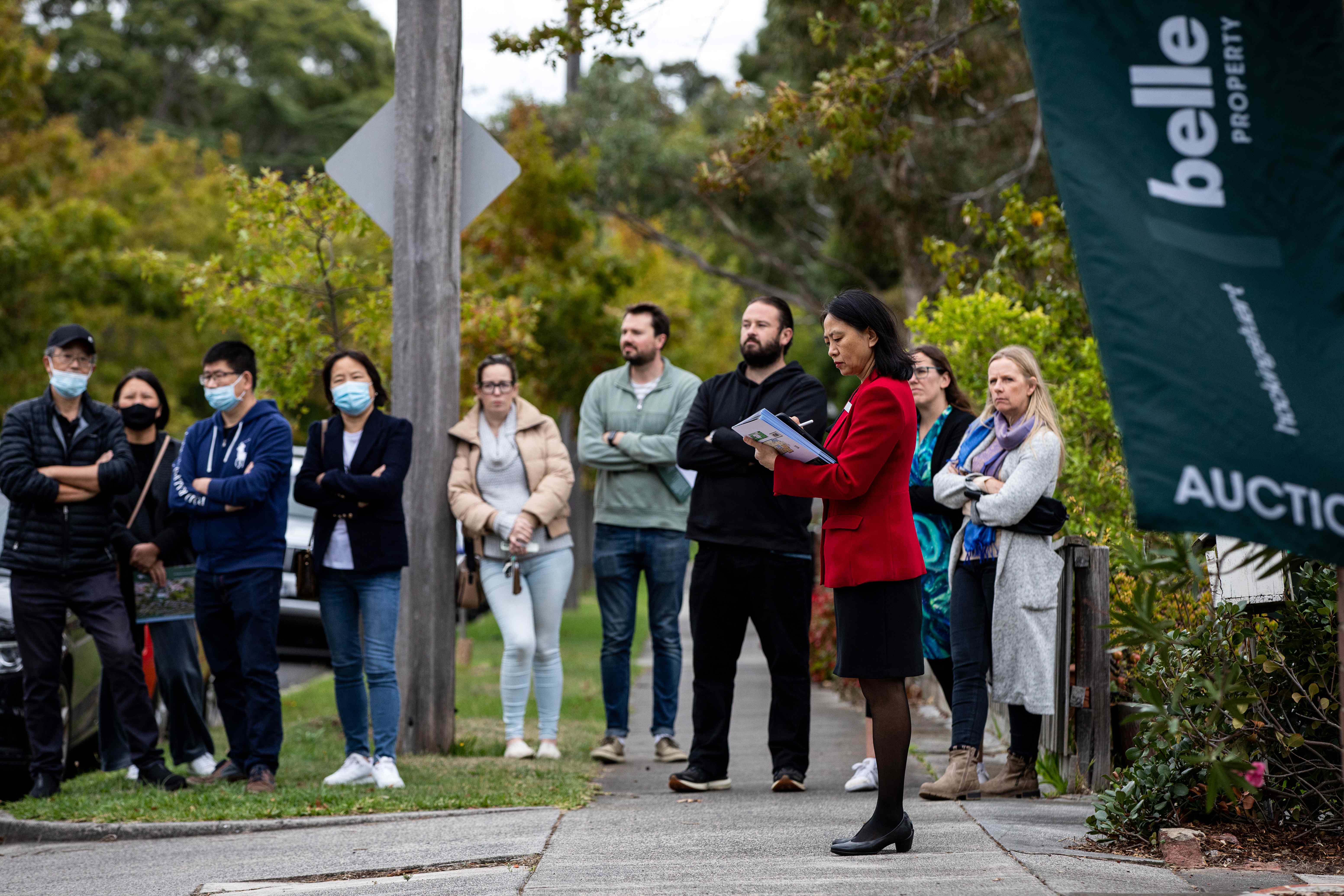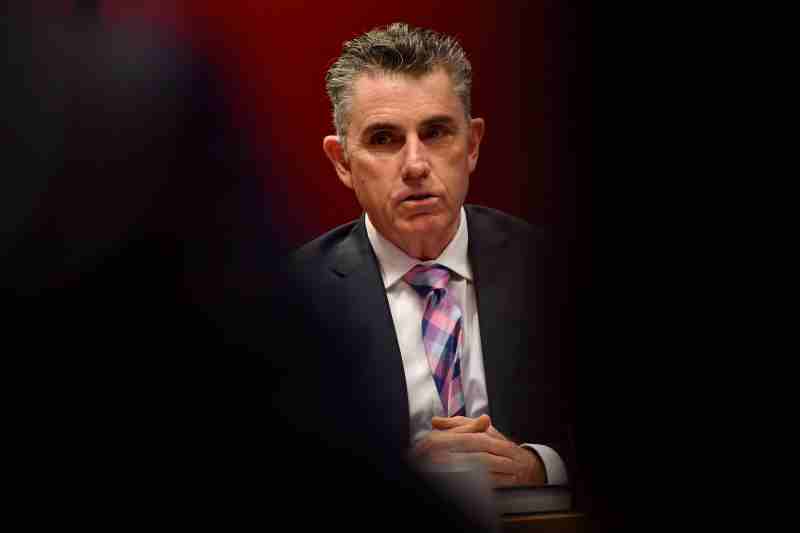Early in his corporate sales career, John Colbert was promoted from successful team member to team leader.
Great reward for a driven a salesman but Colbert soon realised that his continued success would be dependent on the success of the professional group under his care.
More than 20 years on, he admits this was a pivotal moment.
From then on he has explored and dissected team dynamics in the pursuit of best-practice leadership.
Colleagues say he is highly energetic and dynamic with a unique ability to inspire people.
His style is about building a connection with others through his humility, passion and empathy but then quickly breaking down the issues so that people see a clear and compelling vision of what needs to change, with simple and achievable steps to make it happen.
Colbert is also a professional in high demand – at his best when in front of senior executives or large groups who require a significant shift in their thinking, need to believe in new possibilities or have a real risk or opportunity that requires organisational culture alignment.
As the conveyancing industry continues its evolution, we sat with John, now Partner and Director of Corporate Edge, to share his insights on leadership, managing change and bringing the team along for the ride.
AUSTRALIAN CONVEYANCER: The conveyancing industry is a rapidly evolving one. How do operational teams prepare for these inevitable changes and challenges?
JOHN COLBERT: When we are aware these things are going to affect the business, you have to bring the team together and talk openly about what’s happening.
When the team doesn’t know things about what going on around them, the situation triggers uncertainty.
So that means talking about what is going on now and what will happen in the future. Then you can then start to involve the team in some of the things we need to do.
AC: How do you explore this and how do you get this through this process?
COLBERT: It’s often pretty simple; it’s just about having conversations, and the change is the first thing you talk about. It’s important for the leaders to explain the context of the change very clearly so people can understand it. Not everyone is exposed to the things that a team leader is. What is happening in the environment and the market? And what is contributing to the situation?
Then you say, here’s the vision and where we would like to get to and start getting ideas – you’re your people.
AC: How critical is it that the team owns the challenge?
COLBERT: It’s massive because the only way you’re going to get through the changes is by everybody helping out. By feeling involved they are going to take ownership.
AC: Where does the team begin looking for answers? We can imagine it is important to get ideas from all parties then distil them into something intelligible for the business.
COLBERT: It’s more challenging for bigger businesses where you have larger teams, but part of the process is letting everybody know what that process is going to look like and what we are going to do with the information.
Give people some guiding principles – a framework – so that when we are sharing feedback it is still part of the scope of the change we are dealing with. You want most of the ideas to be within a field of play.
Then you’ve got to let the people know what you are going to do with these ideas.
When it’s done and you are making decisions it’s important to let the team know what the thinking process is. Talk about the pro and cons, the factors considered, and why we landing on a particular piece. Just explaining the “why” is often all that the team needs.
AC: Does this happen in a structured environment or are these casual conversations?
COLBERT: You need some structure for bigger businesses to ensure you are going through all the right channels, but honestly, the best way to do it is by having conversations.
We also need explain the strategy for the business and then we are able to describe what is important for the business.
AC: How a can business best equip itself to confront the issues of profitability?
COLBERT: The business needs to constantly look to innovate and evolve. It’s one of the biggest risks to a business if they are not evolving.
How you ready yourself for that is to create a team culture where everybody feels that they can share ideas and challenge the status quo. That comes from leaders constantly creating conversation moments and asking the questions that motivates us to think differently.
Then we have to make people understand the reality of where the business is at. If there are a lot of profitability challenges and cost pressures some business owners and leaders will worry about letting the team know that for fear of how they are going to react.
And while you don’t want to create too much fear, uncertainty and panic, if you’re not sharing the bad news, then it’s all on your shoulders to solve it. But you need the team’s help to find new ways to grow, find new revenue sources, and find ways to be efficient.
AC: The bedrock of those conversations is clearly going to be trust. How do you imbue confidence that no idea is a dumb idea?
COLBERT: That’s going to come down to the leaders’ ability to create what we call psychological safety. This hugely important for all businesses these days. Making you team feel that whatever they share is valued.
Even if the idea is left of centre, the positive is that the team is actually sharing ideas so we need to make them feel appreciated and recognised for that.
But it is also about how you respond to those ideas. Ensure that you respond in a positive way just so they can keep being open. Psychological safety means that no one feels silly, that no one is going to judged or punished for what they say. That is a big part of it. Being a great listener is so important as it is for a leader to be humble in those conversations.
AC: What prompted your passion for helping businesses and teams navigate change and grow?
COLBERT: In my corporate career, I had a pivotal moment when I was promoted to a position with leadership responsibilities. I realised that success in that role depended on the team’s ability to work cohesively. When I saw the team evolve, grow, and perform better, I recognised the importance of creating a positive team culture.
Witnessing team members get promoted and attribute their growth to my leadership was a turning point that ignited my passion for leadership and team development.
AC: What are the key differences between leadership and management, and how should leaders approach their role in small conveyancing businesses?
COLBERT: Leadership and management are distinct but complementary roles. Here’s how they differ:
• Leadership is primarily about people. Leaders focus on inspiring, coaching, developing, and motivating their teams. They set the vision, values, and culture of the organisation, caring for the people within it.
• Management is primarily about things. Managers are responsible for putting structures and systems in place, making sure processes run efficiently, and ensuring resources are utilised effectively.
In small businesses, leaders often have to play both roles. However, it’s crucial to understand the balance and when to wear each hat.
AC: How should leaders balance business-as-usual activity with innovation and change?
COLBERT: Leaders should not let innovation distract from what the business does best but they also need to allocate time for innovation. It’s a balancing act. The key is to maintain a symbiotic relationship between the core business and innovation. The core supports and provides resources for innovation, while innovation opens doors to new possibilities.
AC: What strategies can leaders employ to conduct difficult conversations around accountability?
COLBERT: Difficult conversations should be approached with care. Leaders can express their desire for open, honest dialogue.
When discussing accountability, they should connect the conversation to shared values and standards, emphasising that the goal is to help team members improve. Careful communication and active listening can make these conversations less intimidating.
See what other experts are saying on strategies for growing your business and protecting it from cyber threat by downloading edition two of the Australian Conveyancer.






